Vintage Tribal Kilim Runner 3' 3" x 11' 7" (39" x 139")
Type:
Kilim RugsCollection:
Tribal Runners, Black FridayID:
K0077127Size:
Material:
The designs feature a rich array of symbols representing tribal culture and Anatolian motifs, often in the form of medallions, diamonds, and other geometric shapes.
The designs feature a rich array of symbols representing tribal culture and Anatolian motifs, often in the form of medallions, diamonds, and other geometric shapes. These kilim runners are ideal for hallways and narrow spaces, offering a touch of ethnic charm and artisanal quality to any interior.
Herki kilims not only serve as functional floor coverings but also as artistic expressions of tribal identity, making each rug a unique cultural artifact.
Design Elements
- Geometric Patterns: The runner features a series of symmetric geometric shapes, including diamonds, hexagons, and triangles. These shapes create a visually striking layout that draws the viewer's eye down the length of the rug.
- Symmetry and Repetition: The design relies heavily on symmetrical patterns repeating through the length of the kilim, providing a sense of order and harmony in the aesthetics.
- Border Detail: The outer border has a contrasting color scheme that frames the central designs, enhancing the overall layout and adding depth.
- Texture: The flatweave technique characteristic of kilim rugs results in a tactile texture, emphasizing the craftsmanship and the organic nature of the materials used.
Colors
- Warm Earth Tones: Rich reds, burnt oranges, deep browns, and muted yellows dominate the color palette, evoking warmth and coziness associated with natural materials.
- Contrast: The interplay of vibrant colors against more subdued shades like grey and beige enhances visibility of the motifs and adds complexity to the design.
- Symbolic Colors: Each color carries significance, with red often signifying strength and vitality, while earth tones represent stability and support.
Main Motifs and Their Symbolism
- Diamonds: Commonly interpreted as symbols of wealth and prosperity, diamonds in tribal designs represent the fertility of the land and the richness of life.
- Triangular Shapes: Represent mountains or the earth, indicating stability and resilience. They are frequently associated with protection and a strong foundation.
- Lines and Borders: The lines that create borders in the design serve not only as frames but also symbolize the journey of life, providing direction and guidance throughout life’s paths.
Summary
The vintage tribal kilim runner exhibits a harmonious blend of geometric patterns and vibrant earthy colors. Its design elements include a symmetric layout characterized by intricate motifs, each steeped in symbolic meaning. The use of warm colors enhances the rug's inviting and grounded presence, while motifs like diamonds, hexagons, and triangles convey themes of prosperity, unity, and stability. This kilim runner stands as a testament to the rich cultural history and artisanal craftsmanship that defines tribal textiles.
- Ships in 1-4 business days
- Only one in stock, handmade, unique
- Free shipping via FedEx Express. Easy returns
- Contact us or add a note to your order if you want us to delay your shipping.
- Request more info if you want this rug shorter or narrower
Colors may appear slightly different across various monitors due to screen settings device differences, and external lighting conditions. If color accuracy is important for your space, we recommend viewing the rug on multiple devices or contacting us for a detailed color description. We can provide detailed photos and references using Sherwin-Williams, Benjamin Moore, Pantone, or even Crayola crayons.
You can also visualize most of our products in your own room with AR (augmented reality) on an iPhone or iPad.
Return Policy
Need a rug pad? We recommend RugPadUSA
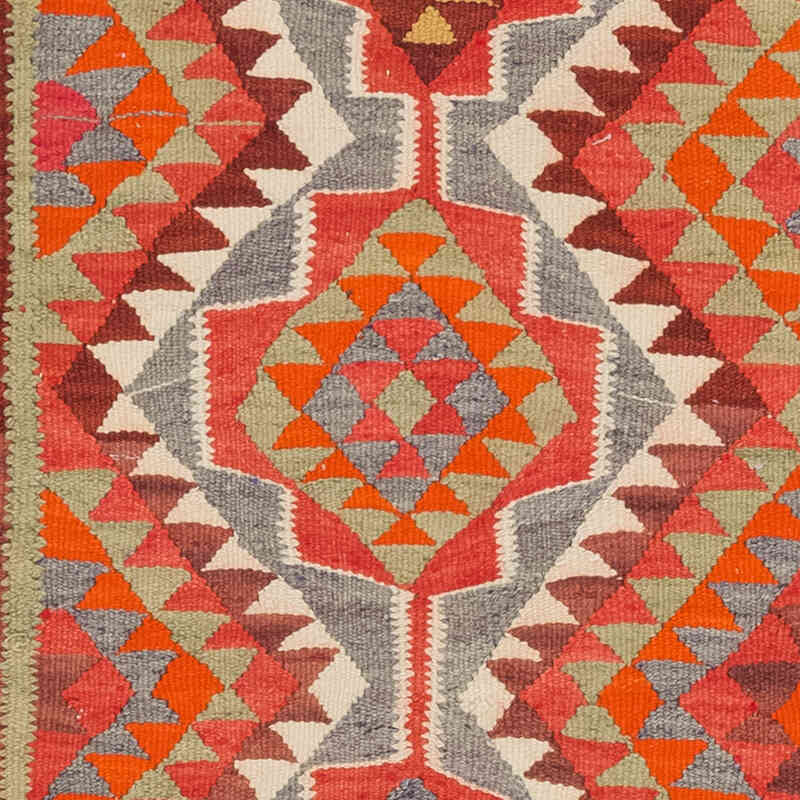
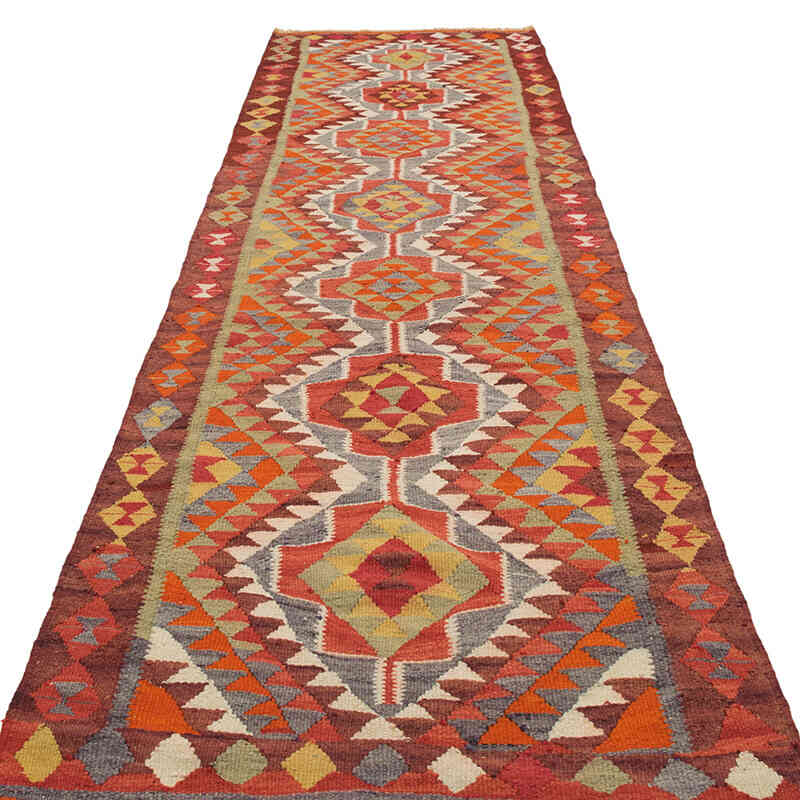
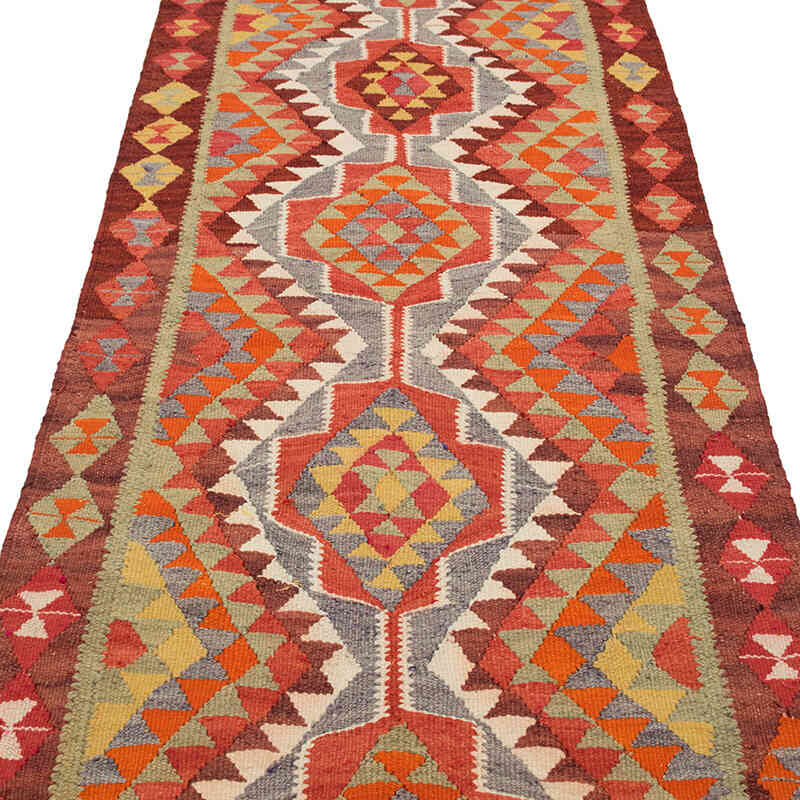

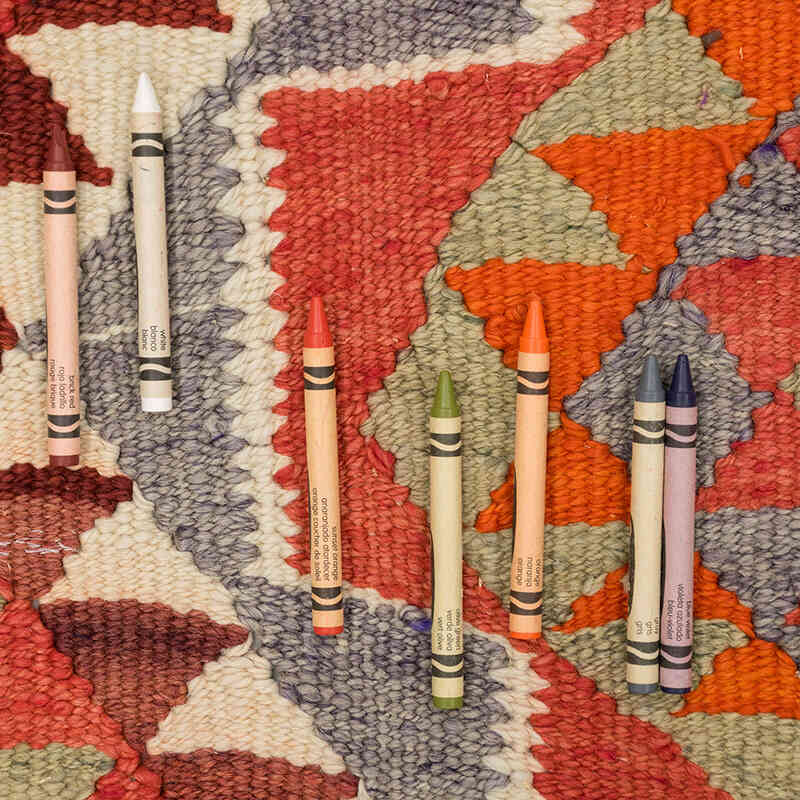
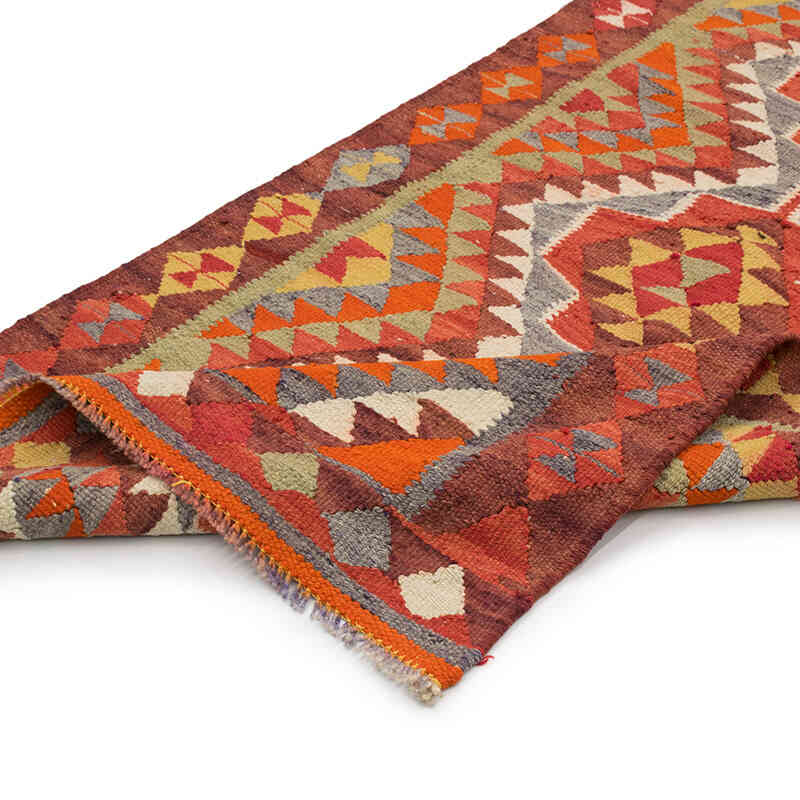
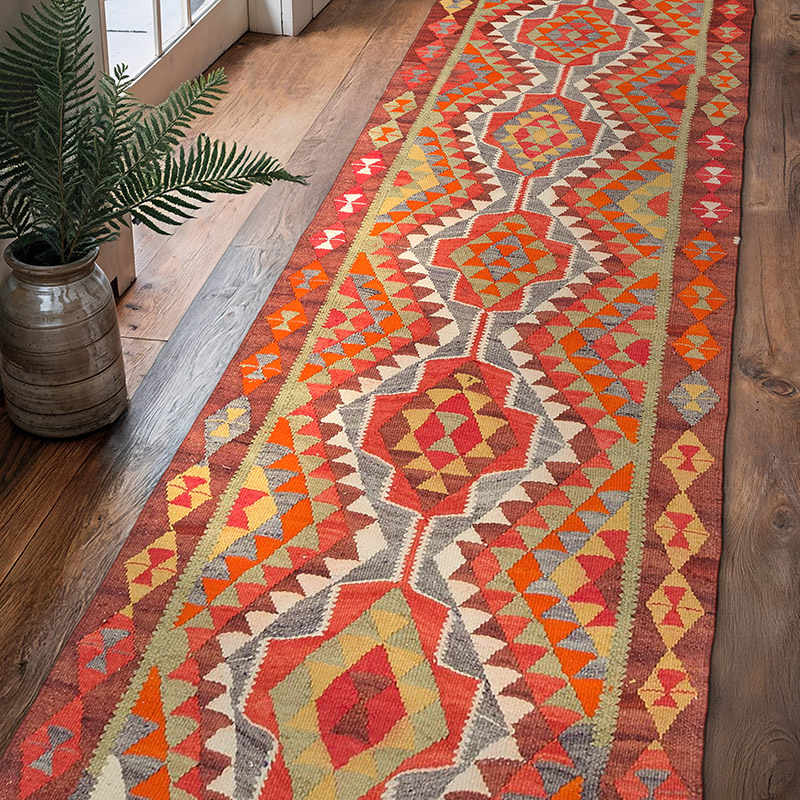
















Turkish Rug